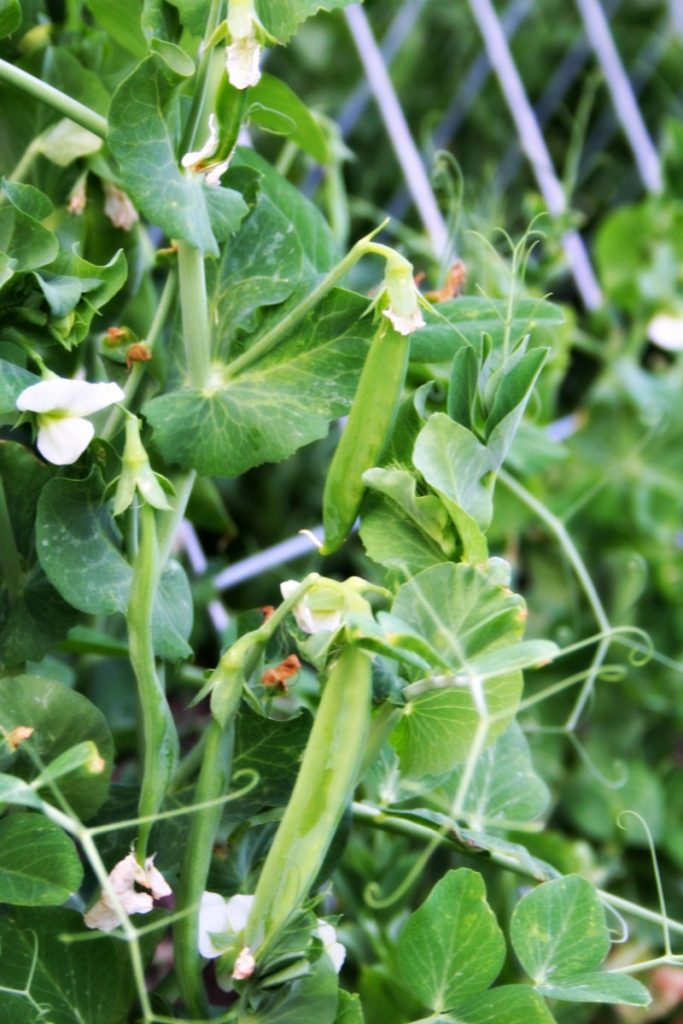Planting peas on Saint Patrick’s Day is a time-honored tradition. It makes sense for our zone 7 garden.

St. Patrick’s Day Traditions
Happy Saint Patrick’s day! I don’t have a drop of Irish blood in me, but I am Catholic, so any day when secular folks decide to mention a saint is okay by me. I just wish the celebrations didn’t involve so much drinking.
When I worked in New York City, us native New Yorkers snidely called this day “amateur day”. There are two “amateur days” in New York City: New Year’s Eve and St. Patrick’s Day. Meaning: all the amateur drinkers come out to play and get in trouble. I tell you, I don’t miss the commute on St. Patrick’s Day. Not a year went by when someone didn’t throw up near me or spill sticky alcoholic goo on my briefcase. I used to arrive home stinking like a gin mill. Now is that the way to honor Ireland’s patron saint, I ask you?!
Seriously though, today holds a special place in my heart for other reasons. The phrase “plant peas on St. Patrick’s Day” may be familiar to you. Mr. Hoffman, my next door neighbor in Floral Park, taught it to me. On St. Patrick’s Day I’d rush home from school. Mr. Hoffman would be tending his vegetable garden. He had purchased one house lot and half of the next lot, and on the half lot he kept a vegetable garden. By New York City standards it was huge, and of course I was small, so it looked even bigger. He grew rhubarb, strawberries and sweet corn; green beans, spinach, tomatoes, and of course, peas. (For those who grew up with me in Floral Park and also attended Our Lady of Victory Church, you knew Mr. Hoffman…he was the sextant there for many years). (What the heck is a sextant? Here’s the definition. It’s basically a church officer who carries the keys and takes care of the building. You’d see Mr H running around with the wine and vessels before Sunday Mass, keys jingling…he’d open the choir loft up for me before Mrs. Cook got there….he was always opening and closing those big stained glass windows at OLV).
He’d wait until I got home from school, then he’d hand me a brown paper sack of peas. Together we’d walk down the row of moist and freshly turned earth and place peas in the furrow. He’d place stakes along the row and string some twine for support. Weeks later, he’d call me over to shuck peas. There is nothing that tastes better than a pea just picked from the vine; the sweetness of a raw pea will make your mouth water.
I found a New York Times article that perfectly captures my childhood experience – this lady also knew the beauty of a freshly picked pea!
Mr. Hoffman grew up on a farm in Elmont, Queens. He was from a family called the Rottkamps that had lived on Long Island since Colonial Times. The farm was near what is now Belmont Race Track; in his day, he said, it stretched all along Elmont Road. My dad would point our strip malls and 7-11’s and say “This is where Mr. Hoffman’s parent’s farm was” and I’d nod, but I’d never really pictured it as farm. It was always concrete and stores when I was little.
My dad was an avid gardener, and my grandma had a wonderful European-style kitchen garden that my dad had designed and built for her as a Mother’s Day present. But leaping over the tiny hedge separating our driveway from Mr. Hoffman’s driveway…picking mint from the herbs growing next to his patio and crushing them between my fingers….and taking armloads of lilacs to school for May Crowning from the bushes growing against his garage are my fondest memories.
And pansies. He’d give me pansy plants every spring from his own garden, lovingly grown from seed.
Planting Peas on Saint Patrick’s Day
Planting peas on Saint Patrick’s Day – March 17 – gives them enough time to grow in the cool weather. Peas thrive in cool, damp weather, which is typically what we find here in spring. You can also plant them a little earlier in the season. Cover peas with cloth (never plastic) if a frost is predicted.
I usually wait to add netting or trellising until the peas develop, but you can add this at the time when you plant peas.




